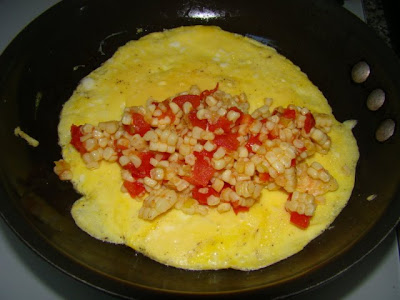 |
| Oven-roasting makes this chicken super juicy. |
You should smell my kitchen when this meal is cooking! I call this Tuscan-style because it reminds me of all the herbs I love in Tuscany to season roast chicken. The ingredients are simple: olive oil, fresh lemon juice, oregano, thyme, rosemary, basil, fresh garlic, salt, and pepper. And, the chicken of course.
 |
| Opened up and flattened. |
serves: 4 - 6 prep time: 15 minutes
cook time: 45 minutes
One roasting chicken, about 4 pounds
Marinade for one chicken:
1/4 cup olive oil
2 cloves garlic, pressed or minced
1 large or 2 small lemons, juice squeezed
1 heaping tablespoon dried rosemary
1 heaping tablespoon dried basil
1 heaping tablespoon dried thyme
1 heaping tablespoon dried oregano
1 teaspoon sea salt
1/2 teaspoon black pepper
Mix all ingredients together in a bowl and rub all but a small amount over the entire bird including under the skin of the chicken. Lay the chicken on a greased baking or roasting pan, skin side up. Bake at 400 degrees for about 20 minutes. Remove the chicken from the oven and turn it over in the pan. Pour the rest of the marinade over the exposed flesh and put the chicken back in the oven for another 20-25 minutes. When the chicken is cooked and the juices run clear*, cut into serving pieces and enjoy.
* To say that the juices run clear means that if you poke the flesh with a sharp knife, the juices running out of the puncture should not be tinted red with blood which indicates raw meat inside.
This meal included a tossed green salad with avocado and a light vinaigrette (I used Newman's Balsamic low-fat mist thanks to my friend Nicole who showed me what it was), steamed broccoli, fresh berries (blueberries and strawberries) and parmesan toasts. The entire meal offers your full RDA for Niacin and double that for Vitamin C. This is also a big contributor for Selenium, Phosphorus, other B vitamins, and about 1/2 of your daily Iron requirement. In addition, this meets about 1/4 of your daily potassium needs which is important since that is often one of the most under-eaten elements. And the calorie count is: 575! This is a big wow factor because it is so yummy, nutritious and won't kill you on the scales.
If you are one of those that insist on dessert, this meal deserves something like a sorbet or almond meringue cookie. Buon appetito!
- Kim Fielding










